Ever felt like you’re spending more time battling with your fishing gear than actually fishing? Boy, do I understand. After many a morning spent untangling knotted lines and hunting for elusive lures, I’ve finally unearthed some foolproof DIY hacks to streamline your fishing experience – without needing those pricey brands.
This blog post promises to arm you with 9 savvy tips to craft and manage your own unique fishing gear while keeping your expenses reeled in. Believe me when I say that this might just be the deep-sea escapade that’s definitely worth taking a plunge into!
Key Takeaways
- DIY fishing gear hacks can save you money and customize your gear to fit your specific needs.
- Homemade rod sleeves, fishing nets, fly boxes, and rod vaults are affordable and practical solutions for enhancing your fishing experience.
- Using barbless hooks promotes sustainable fishing practices by reducing harm to the fish and increasing catch-and-release success rates.
- Choosing the right saltwater fly fishing gear, such as rods, reels, lines, and leaders, is crucial for a successful fishing adventure.
Essential Gear for Salt Water Fly Fishing
To have a successful saltwater fly fishing experience, you will need a few essential pieces of gear: a reliable fly rod, a sturdy reel, the right fly line, and a leader.
Fly rod
A fly rod is a must for saltwater fly fishing. It needs to be strong and handy. You use it both to throw the line and fight the fish when you catch one. One good choice is a 9-weight rod.
Many pick this type of rod for saltwater fly fishing, like those from Orvis. Pick your gear with care, thinking about where you will fish in the sea.
Reel
I want to share some tips about the reel. This is a big part of your saltwater fly fishing gear. You can’t fish right without a good reel and rod. Make sure you pick one that fits well with your rod.
Having an adjustable drag system is key too. At least 20 pounds of drag is best for this kind of fishing. I also like reels that let me pull out line fast when I cast, then lock up tight as soon as I’m ready to set the hook.
Keeping your reel clean helps it last longer too! Here’s my trick: wipe it down with paper towel and Dawn Dish Liquid. Also, don’t forget that good care will make it work better and longer in harsh saltwater settings like Seychelles or other hot spots for fly fishing.
Fly line
Fly lines are key for saltwater fly fishing. They’re made by forming a coating over a core. The type of stuff in the line can change. It depends on what kind of line it is. Orvis is one brand that makes these fly lines.
Fly lines need to match with your fly rod too. This helps make sure you catch as many fish as possible! Knowing about fly lines and how they taper is big part in learning how to fish with a fly rod.
Leader
A specialized leader is an important piece of gear for saltwater fly fishing. It helps to connect your fly line to the fly and allows for a smooth presentation in the water. When fishing for shy fish in clear, calm water, longer leaders are recommended.
They may be more challenging to control, but they can help you get closer to the fish without spooking them. For these types of conditions, it’s also advisable to use smaller tippet sizes.
A 9-foot 4X or 5X leader is a commonly used choice for saltwater fly fishing. Additionally, DIY saltwater leader formulas can be simple yet effective for this type of fishing adventure.
How to Choose the Right Saltwater Fly Fishing Tackle
Choosing the right saltwater fly fishing tackle is crucial for a successful fishing experience. From selecting the right rod based on species and conditions, to considering reel size and construction, there are many factors to consider.
Read on to discover expert tips and advice on choosing the best gear for your next saltwater fly fishing adventure.
Select a rod based on species and conditions
Choosing the right rod is very important when it comes to saltwater fly fishing. The rod you choose should be based on the species of fish you’re targeting and the conditions of your fishing location.
Three common species in saltwater fly fishing are bonefish, permit, and tarpon. Each of these species requires a different type of rod for optimal success. It’s also crucial to consider the weight and flexibility of the rod, as these factors determine its power and performance.
So make sure to select a rod that matches your target species and the conditions you’ll be fishing in for a more successful and enjoyable experience on the water.
Consider reel size, drag, and construction
Choosing the right reel for saltwater fly fishing is important. You need to consider the size of the fish you want to catch and match it with the appropriate reel size. The drag system on a saltwater reel is crucial because it helps control how much line is let out when a fish pulls on it.
It’s also important that the drag system can withstand salt and moisture damage. There are two main types of drag systems: click and pawl, which are good for smaller fish and lighter tackle, and disc drag, which are better suited for larger fish and heavier tackle.
So, make sure you consider reel size, drag, and construction when selecting your saltwater fly fishing gear.
Choose a line and leader based on rod size
When it comes to saltwater fly fishing, choosing the right line and leader based on your rod size is crucial for success. A ten-weight fly line is recommended for saltwater fishing as it provides the necessary strength to handle larger fish.
For a nine-weight rod, which is ideal for bonefish, permit, and baby tarpon fishing, you’ll want to match it with a suitable leader. Understanding the weight of your rod and selecting an appropriate line and leader will ensure that you have the right setup for your fishing adventure.
It’s important to consider these factors when preparing your gear for a day out on the water.
Determine the best set up for your fly fishing style
Choosing the right set up for your fly fishing style is important to ensure a successful and enjoyable experience on the water. Consider factors like the species you’re targeting, the conditions you’ll be fishing in, and your personal preferences.
Start by selecting a rod that suits your needs based on these factors. Look for a reel with a suitable size, drag system, and construction that will withstand saltwater conditions.
When it comes to fly line and leader, choose ones that match the size of your rod. Experiment with different set ups to find what works best for you and enhances your fly fishing style.
9 Effective Tips for DIY Fishing Gear Hacks Achievement
In this section, I will share nine effective tips for achieving DIY fishing gear hacks. These hacks will help you save money and customize your gear to fit your specific needs. From homemade rod sleeves to DIY fly boxes, there are plenty of creative solutions that will enhance your fishing experience.
Let’s dive in!
Homemade Rod Sleeves
I found that making homemade rod sleeves is an effective DIY fishing gear hack that can save you money. You can create these sleeves for just $1-2 each, using affordable materials like rod tube material.
With DIY rod sleeves, you can prevent your fishing rods from getting tangled and provide extra protection against chips and scratches. Plus, they cost only about one-third of the price of store-bought sleeves.
So, why not give it a try and make your own rod sleeves?
Homemade Fishing Net
As a fishing enthusiast, I have discovered that making your own fishing gear can be both fun and rewarding. One of the DIY hacks that I highly recommend is creating a homemade fishing net.
Having a fishing net can significantly increase your chances of catching fish. It’s best to make a big net to maximize your catch. A wooden landing net is especially useful for anglers, and you can easily make one by hand.
So why not give it a try? With some simple materials and basic woodworking skills, you’ll have your very own homemade fishing net in no time.
DIY Fly Boxes
Making your own fly boxes is a great way to save money and customize your fishing gear. DIY fly boxes can be crafted using materials like wood or magnets, allowing you to create personalized storage solutions for your flies.
By organizing your flies in these homemade boxes, you’ll have easy access to different types of flies while out on the water. Additionally, DIY fly boxes can also double as a drying station for wet flies during fishing trips.
So why not get creative and make your own affordable and efficient fly organization system?
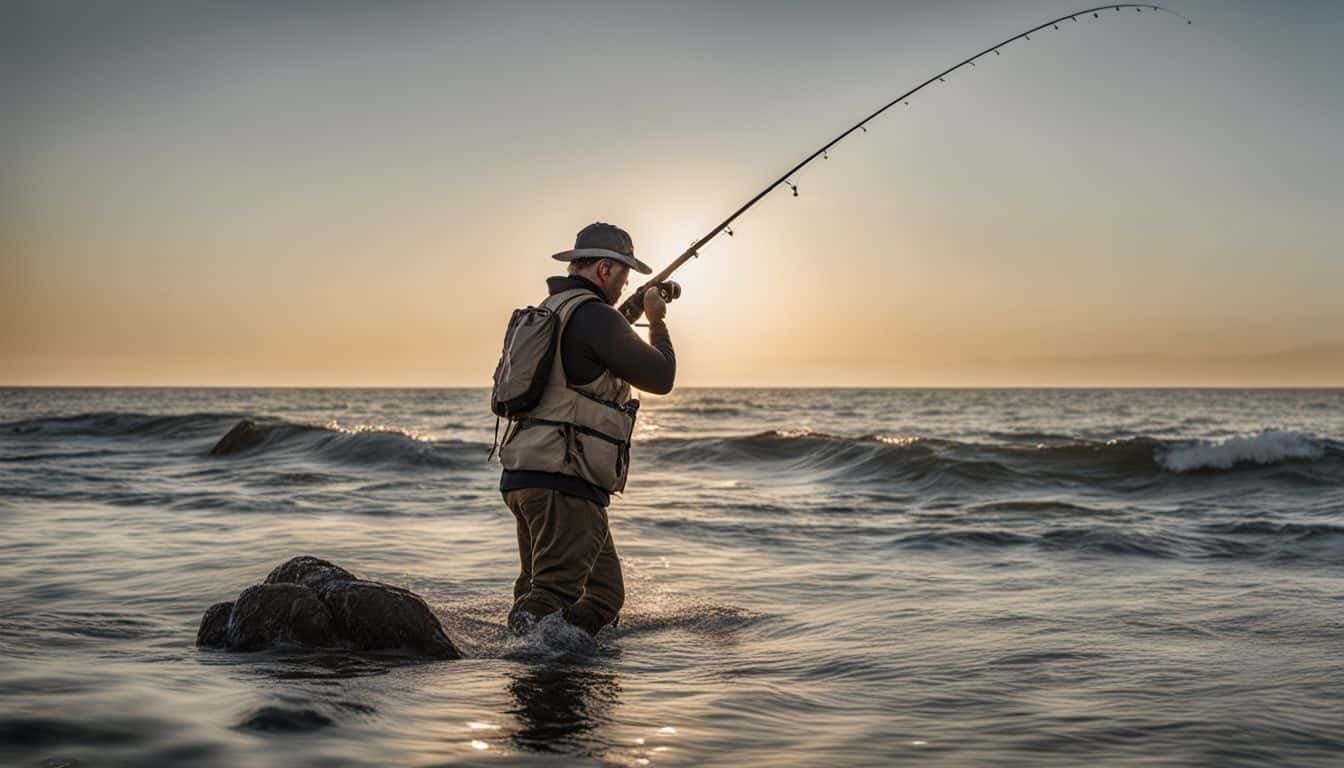
Homemade Fly Fishing Seine Net
In my article on DIY fishing gear hacks, I discuss the homemade fly fishing seine net as a useful tool for anglers. Making your own seine net is an effective tip for catching more fish.
By using this net, you can quickly narrow down your fly selection and increase your chances of landing big fish. In Kayak Hacks Fishing’s video tutorial, they provide step-by-step instructions on how to create your own homemade seine net.
It’s a practical and affordable solution that any fishing enthusiast can try out!
DIY Fishing Rod Vault
When it comes to protecting your fishing rods from damage, a DIY fishing rod vault can be a great solution. Building your own rod vault allows you to safely store and transport your fishing rods, ensuring they stay in excellent condition.
By constructing a homemade rod vault, you can protect your rods from chips and scratches that could occur during storage or transportation. Whether you choose to make a portable rod carrier or a DIY roof rack rod vault, these storage solutions will help keep your fishing rods safe and secure.
So why not give it a try and enjoy the benefits of having a custom-made rod vault for all your fishing adventures?.
Fishing Ethics
Using barbless hooks has both advantages and disadvantages in fishing.
Advantages and Disadvantages of Barbless Hooks
For any fishing enthusiast, the choice between barbless and barbed hooks can greatly influence the fishing experience, the health of the fish, and sustainability practices. Let’s explore the pros and cons of using barbless hooks.
| Advantages | Disadvantages |
|---|---|
| Barbless hooks cause less damage to the fish’s flesh upon entry and exit, thereby minimizing harm. | In certain situations, the hooking effectiveness of barbless hooks may be reduced. |
| Even in winter, tying barbless hooks can enhance carp fishing. | |
| For catch and release purposes, barbless hooks are more effective. | |
| Barbless hooks promote sustainable fishing practices by reducing harm to the fish. | |
| Increased safety is an advantage of using barbless hooks, especially during hook removal. | |
| Barbless hooks improve catch and release success rates by causing less trauma to the fish. |
The decision between using barbless or barbed hooks will ultimately depend on your personal preference and the specific fishing scenario you find yourself in. Always consider the most ethical and sustainable choice for your fishing activities.
Tips on Best Practices for Fishing with Barbless Hooks
Using barbless hooks is not only a responsible fishing practice but also ensures the safety and well-being of both the angler and the fish. By using barbless hooks, we can promote fish conservation by reducing handling time during catch and release.
This means that the fish spend less time out of water, which increases their chances of survival. Barbless hooks are designed to be easily removed from a fish’s mouth, minimizing any potential harm or trauma caused during the release process.
Additionally, using barbless hooks aligns with ethical fishing principles as it reduces stress and trauma inflicted on the fish. So next time you go fishing, consider using barbless hooks for a more sustainable fishing experience.

Storage Tips for Hunting and Fishing Gear
Store your hunting and fishing gear efficiently with these storage tips.
Cabinet Storage
I found that using a cabinet with lots of storage space is a great way to keep your hunting and fishing gear organized. You can store your equipment neatly in the cabinet, making it easy to find what you need when you’re getting ready for your next adventure.
I suggest using a steel storage rack with wire decking because it allows you to hang backpacks and vests, making them easily accessible. With this setup, you’ll have everything at your fingertips and ready to go whenever you’re heading out for some fishing or hunting fun.
Wire Shelving Rack
I love using wire shelving racks to store my hunting and fishing gear. They are great for keeping everything organized and easily accessible. I especially like using short sections of wire shelving screwed to the ceiling in my garage or workshop as a homemade fishing rod holder.
It’s simple yet effective. Another benefit of wire shelving is that it promotes air circulation, which helps prevent condensation and dust buildup on my gear. Plus, wire shelving units are easy to clean, making them a practical solution for organizing small pantries as well.
And let’s not forget that wire shelving can also be used to hang tools, making them easier to store and access when needed. It’s such a versatile storage solution!
Spool Box
I love using a spool box for storing my fishing line. It’s a convenient and organized way to keep all my different types of fishing line neat and easily accessible. The spool box from Plano is especially great because it can hold up to six spools of fishing line up to 1-inch thick.
This means I can have all my favorite lines in one place, ready to go whenever I need them. No more searching through tangled messes or digging around in tackle boxes – everything is right there in the spool box, ready for action.
Whether I’m fishing in saltwater or freshwater, having a dedicated storage container like the spool box has made managing my fishing gear so much easier.
PVC Fishing Pole Holder
I love using a PVC fishing pole holder to store my fishing rods. It’s a simple and convenient solution that keeps my rods secure and organized. The holder is made from PVC pipes and fittings, allowing me to customize it to fit the number of rods I have.
The rod tips slide up through the couplings, while the handles rest in the caps. This ensures that my rods are safely stored without any risk of damage. The best part is that this holder works not only for fishing gear but also for hunting gear, making it a versatile storage option.
Plus, it’s cost-effective and easy to set up in my garage, providing an efficient way to keep my fishing rods in top condition.
Canoe Rod Holder
When trolling in a canoe, it’s important to have a rod holder for your fishing pole. Homemade rod holders made of PVC are a great option for storing your fishing poles securely. They can be easily constructed and attached to the sides of your canoe, providing you with a convenient and accessible place to hold your rods while you fish.
With a canoe rod holder, you can keep your hands free and focus on reeling in that big catch without worrying about holding onto your fishing pole. So grab some PVC pipes, get creative, and make yourself a reliable and practical rod holder for your next canoe fishing adventure!
Camo Cabinet
The Camo Cabinet is a great storage option for all your hunting and fishing gear. It’s designed to help you keep everything organized in one place. With plenty of room, you can store your rods, reels, tackle boxes, and more.
The best part is that the Camo Cabinet is a DIY project, so you can customize it to fit your specific needs. Whether you’re an avid angler or a passionate hunter, this cabinet will make it easy for you to find and access all your gear whenever you need it.
No more searching around or dealing with clutter – the Camo Cabinet has got you covered!
Under-Stairs Storage
I love finding clever storage solutions, and one of my favorites is utilizing the space under the stairs for extra storage. It’s such a smart way to maximize the potential of your home and keep things organized.
You can install hidden storage drawers under the staircase, which are perfect for storing hunting and fishing gear like rods, reels, tackle boxes, and more. This not only keeps your gear neatly tucked away but also prevents any damage that could occur if they’re left out in the open.
Another great idea is to hang your fishing rods on the wall using wall-mounted rod holders. This saves space and makes it easy to grab them whenever you’re ready for a fishing adventure.
DIY Fishing Rod Holder for 5th Gen 4Runner
In this section, I will provide a step-by-step tutorial on how to create your own DIY fishing rod holder specifically designed for the 5th Gen 4Runner.
Step-by-Step Tutorial
I want to share a step-by-step tutorial on how to make a DIY fishing rod holder specifically for the 5th generation of the Toyota 4Runner. Here’s what you’ll need and how to do it:
- Gather your materials: You’ll need quick fists, which are rubber clamps that will hold your fishing rods securely. You can find them at most hardware stores.
- Measure and mark the placement: Decide where you want to place the rod holder in your 4Runner. The passenger seat is a convenient spot, as it allows easy access and organization.
- Attach the quick fists: Use screws or bolts (depending on your car’s interior) to attach the quick fists to the chosen location. Make sure they are positioned in a way that will securely hold your fishing rods.
- Test and adjust: Once everything is attached, test the rod holder by placing your fishing rods inside. Adjust the quick fists if needed to ensure a snug fit.
Video of the Week
This week’s video showcases 9 effective tips for achieving DIY fishing gear hacks. The video offers valuable advice on repurposing everyday household items to improve the functionality of your fishing gear.
Here are some of the tips featured in the video:.
– Learn how to make homemade rod sleeves to protect your fishing rods.
– Discover how to create a DIY fishing net using materials you already have at home.
– Get ideas for making your own fly boxes, so you can organize and store your flies efficiently.
– Find out how to make a homemade fly fishing seine net for catching bait fish.
– Learn how to build a DIY fishing rod vault for safe transportation and storage.
The video emphasizes the importance of customizing your fishing gear to suit your individual preferences and techniques. It provides step-by-step instructions and visual demonstrations, making it easy for you to implement these practical DIY hacks.
So grab some everyday items and get ready to upgrade your fishing gear with these creative ideas!
Angler Story of the Week
I want to share a great angler story with you this week. It’s about a fishing enthusiast named Mark who put his DIY skills to use and created an amazing customized fishing rod holder for his 5th Gen 4Runner.
He wanted a convenient and secure way to transport his rods while on the go, so he decided to make his own rod holder.
Mark started by measuring the dimensions of his vehicle’s interior and then gathered the necessary materials, including PVC pipes, fittings, and adhesive. He carefully cut the pipes into appropriate lengths and attached them together using the fittings.
Once everything was securely connected, Mark positioned the rod holder in his car and made sure it fit perfectly.
The end result was impressive! Mark now has a reliable and space-saving solution for transporting his fishing rods safely in his vehicle. This DIY project not only allowed him to customize the rod holder according to his specific needs but also saved him money compared to buying one from a store.
I find stories like these inspiring because they show how anglers can get creative with their gear and come up with practical solutions that enhance their fishing experience. Whether it’s modifying existing equipment or creating something entirely new, DIY projects like this add a personal touch to our fishing setups.
So if you’re someone who enjoys tinkering with gear or wants to find ways to make your fishing trips more convenient, I encourage you to explore some DIY options. You never know what amazing ideas might come out of it!
Conclusion on DIY Fishing Gear Hacks Mastery
In conclusion, these 9 effective tips for DIY fishing gear hacks can help you achieve success in your fishing adventures. From homemade rod sleeves to DIY fly boxes and fishing rod vaults, there are plenty of creative and cost-effective ways to enhance your gear.
By repurposing items like tennis rackets and PVC pipes, you can create your own fishing net and rod holders. With these tips in mind, you’ll be well-equipped for a successful day on the water.
Happy fishing!
FAQs on DIY Fishing Gear Hacks Mastery
1. Can I use household items for DIY fishing gear hacks?
Yes, you can use common household items like paperclips or plastic bottles for DIY fishing gear hacks.
2. Are these DIY fishing gear hacks effective?
Yes, these tips have been tested and proven to be effective by experienced anglers.
3. Do I need advanced skills to achieve success with DIY fishing gear hacks?
No, most of the tips are easy to follow and require basic knowledge of fishing techniques.
4. Will using DIY fishing gear hacks save me money?
Yes, by using everyday items instead of purchasing specialized equipment, you can save money on your fishing gear.
5. Can beginners benefit from these DIY fishing gear hacks?
Absolutely! These tips are suitable for beginners and can enhance their overall fishing experience without breaking the bank.

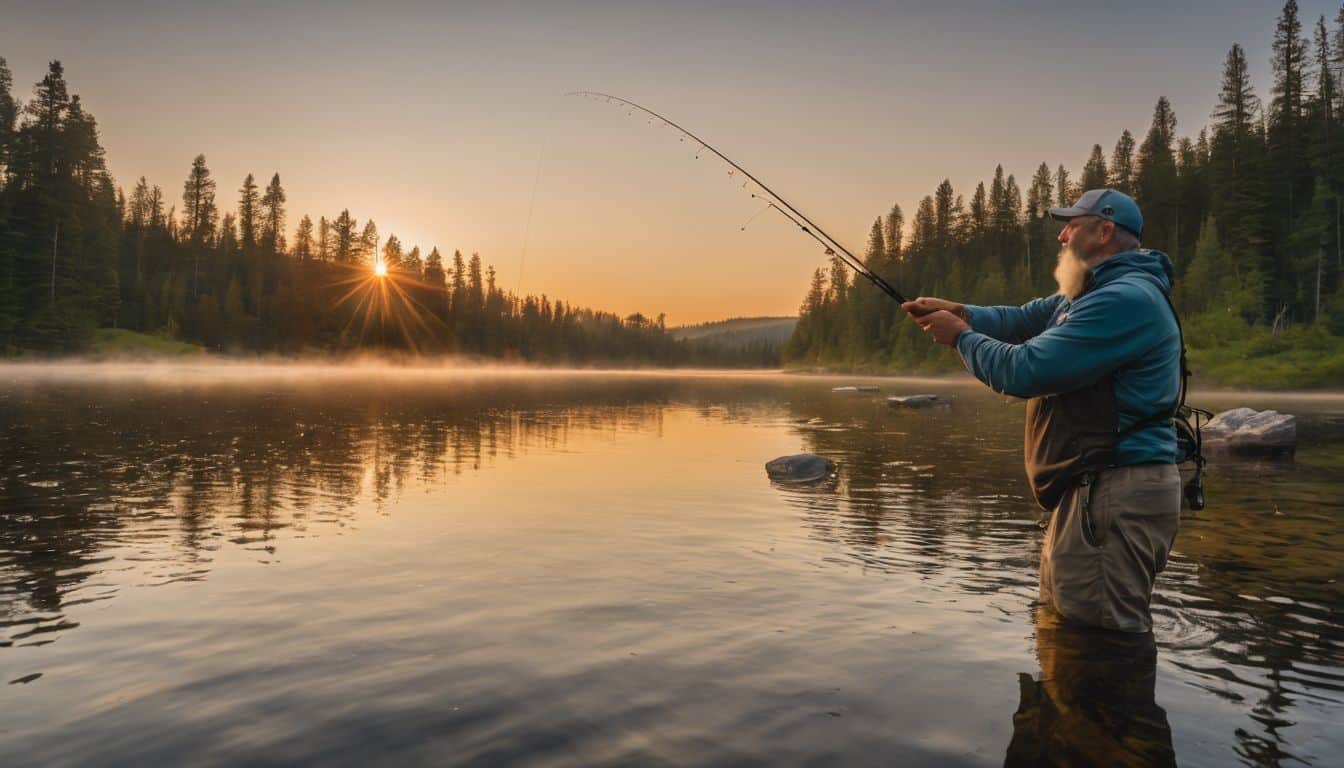
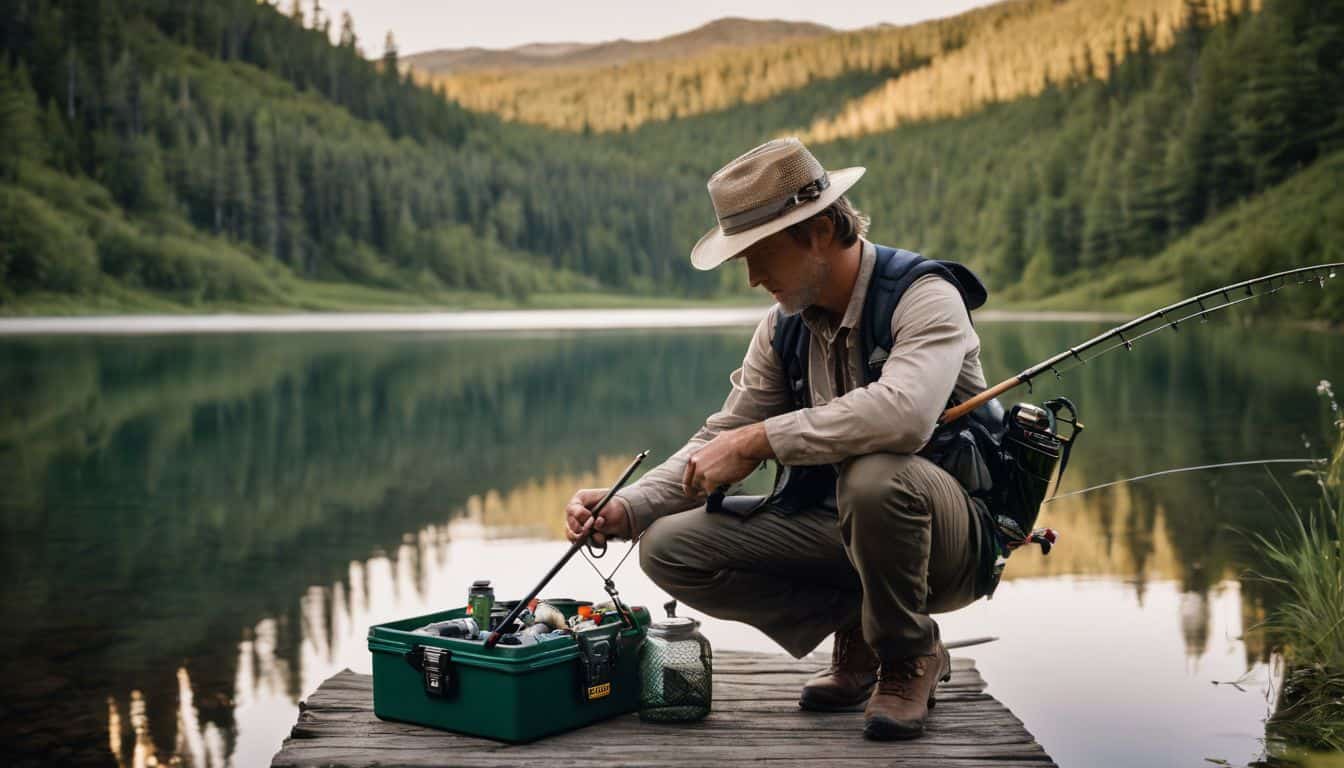
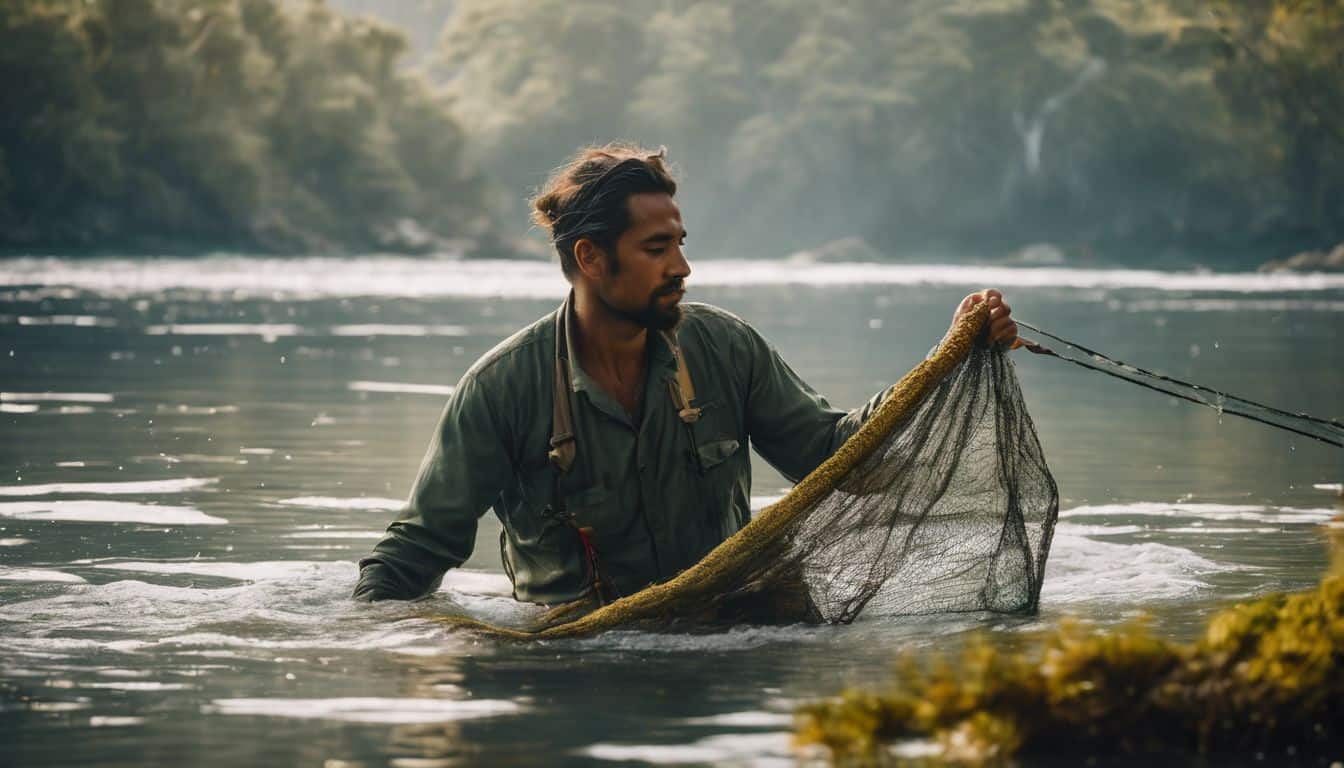
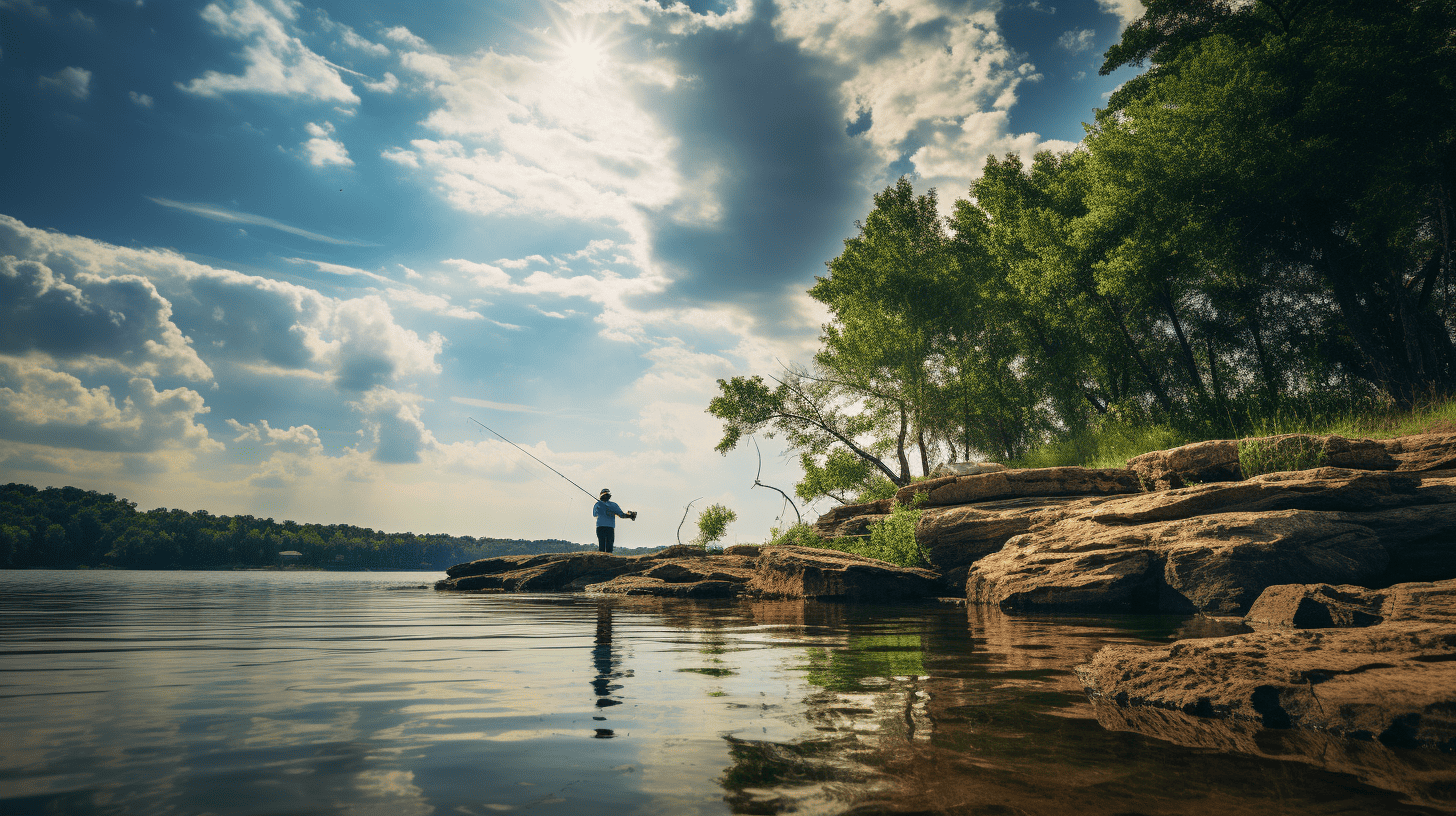
Leave a Reply